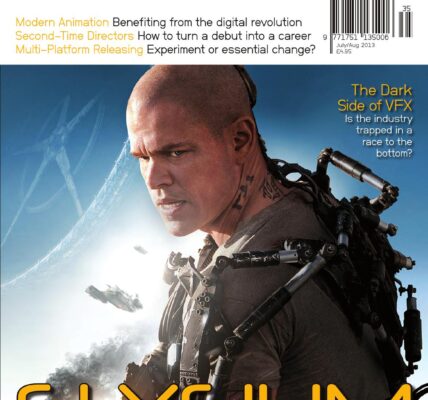Sensual Density: A Conversation with Desplechin
Desplechin’s first English-language film, ESTHER KAHN (2000)—an homage to the New Wave cinema techniques pioneered by François Truffaut—secured his reputation as a rising auteur of his generation. Developing themes that revealed an intimate bond between literature and cinema, and repeatedly working with an ensemble of actors who helped express his amply-structured narratives, Desplechin reached new heights of artistry with KINGS & QUEEN (2004), which won Mathieu Amalric the César Award for Best Actor.
His most recent film, A CHRISTMAS TALE (UN CONTE DE NOËL), starring Catherine Deneuve, Mathieu Amalric, Emmanuelle Devos, and Chiara Mastroianni, screened in competition for the Palme d’Or at the 2008 Cannes Film Festival, won Deneuve special mention, and has gone on to charm audiences the world over.
“There is something bizarre between the camera and women that belongs just to cinema, which doesn’t happen on the stage, it happens only on the screen.”
During a recent visit to San Francisco to christen the French Cinema Now series inaugurated by the San Francisco Film Society, movieScope caught up with Desplechin to discuss his Christmas tale.
After watching A CHRISTMAS TALE, I was reminded of that wonderful line in James Goldman’s THE LION IN WINTER when—after King Henry’s three sons Richard, Geoffrey and John have mercilessly connived against each other—Eleanor of Aquitaine remarks wistfully, “Ah well. What family doesn’t have its ups and downs?” The family gathering becomes the crucible in which the individual gets cooked and no one captures that alchemy better than you. Can you speak to your frequent exploration of this tension between individuals and family?
In previous films people have asked me why I like to show the family of the characters, which reminds me of how we used to joke around when I was eight or ten about how embarrassing it was when schoolmates met your family. It was always a shameful experience. Your friends would meet your mother or your father or your sister or your brother and they would have all these bad jokes about, “Your mother is like this or your father is like that.” There’s a shame in showing your family to friends because all the family’s naked imperfections are revealed. You can’t hide how ridiculous they are. When you’re with your family, you can’t pretend. Each time I work on a character, I’m curious to know things about his or her family. Suddenly the character can’t bullshit me any longer. I know their mother. I know their father. They can’t pretend they’re such a hero or anything like that. Sometimes when people see that A CHRISTMAS TALE is so much about the family, they react to the film by asking me if I’m pro- or anti-family; but, I can’t say I’m either pro- or anti-family. Families just happen. I don’t think a thing about the rain; it’s just raining. That we are each here today means we were both born and have a family—I don’t think much about it—but, this particular family is funny. I’ve never felt that a family has to work or not work. Of course every family is dysfunctional. Friendships work because you work at them; but, families…?
Your films are known for their stylistic density. American film critic J. Hoberman has written that in your films plot is frequently trumped by texture. And I’m aware that on the set of KINGS AND QUEEN you used Truffaut’s maxim: “Every minute four ideas”. A CHRISTMAS TALE is equally intriguing for its wealth of articulated ideas. For me they were like Pandoric boxes, which—once opened—released much unexpressed emotion. Can you speak to that dynamic between ideas—which you love—and emotions, which are so strong in your films?
I guess what I’m calling ideas are very material. A close-up, not so much on a face, but on the props and details on the set: the white glass of milk in Hitchcock’s famous movie, for example, with poison in it. That’s an idea. It’s not an object any longer. What does it mean? I don’t know exactly. I’m not a philosopher. But you can feel that the shot is full of ideas. You can see that it’s an idea. In Hitchcock’s movies you have a lot of ideas like that. It can be a way of acting: laughing instead of crying; crying instead of laughing. It’s complete. So when I’m saying ideas, I don’t mean intellectual concepts; I mean practical, aesthetic emotions.
“Each time that I was afraid I was copycatting Anderson, I would switch to Bergman and then when I became afraid of copying Bergman, I would go back to Anderson.”
Another way you texture and complicate your films is through cinematic citation. KINGS AND QUEEN definitely bore many traces of Hitchcock. Would you say that in A CHRISTMAS TALE you were more consciously informing the film with Bergman?
Yes. The main thing is that it’s not a game. It’s not a trick. It’s more a goal, or an aim, a target, a direction. What is cinema if it is not action? You have to provoke actions in each scene. In the process of writing A CHRISTMAS TALE, the script appeared as a comparison between two films, which were released the same year in France: one was SARABAND and the other was THE ROYAL TENENBAUMS. The Wes Anderson film was quite desperate and full of anxiety and SARABAND—though a brutal movie—is full of fun in an odd way. The suture of the two of them was so close to A CHRISTMAS TALE that I had to use them. Each time that I was afraid I was copycatting Anderson, I would switch to Bergman and then when I became afraid of copying Bergman, I would go back to Anderson. The feel of all three films is about a house with brash characters, an incestuous flavour, and desperation; but the goal is to have a good show that is full of energy.
Yet another way you texture the film is through the use of cinematic devices such as the iris shots and montages; my favourite being the one of the heart locket spinning against Roubaix as a backdrop. Absolutely lovely and thrilling. Can you speak about where that came from? I know what I felt when that image came onto the screen but I can’t quite articulate it. What were you hoping people would feel in that image?
That’s what I’m calling an idea. I can’t quite articulate it either. There’s something childish about it, something about the lost adolescence of Elizabeth [Anne Consigny], perhaps Spatafora [Samir Guesmi] was Elizabeth’s lover? Perhaps the locket doesn’t mean the love of this boy for Elizabeth. Perhaps it just means the love Elizabeth feels for her mother? We don’t know. It’s just turning, like a game, like a merry-go-round. It’s just a heart and it’s moving. And at the end of the movie, Elizabeth places the heart locket at the foot of her mother’s bed while she’s waiting, not knowing if she will come home. It’s a game. That’s why I call it an idea, precisely because I cannot articulate it, except through an image and editing. Also, the heart carries over into the scene where Faunia [Emmanuelle Devos] is leaving the house and Paul [Emile Berling] is so clumsy in his adolescence, so embarrassed, and Faunia draws a small heart on his hand as a gift. It’s like his first kiss. So you have the heart moving from Elizabeth to her son.
Let’s speak of Mathieu Amalric. Although it’s been referenced by other journalists, I’m not sure anyone has specifically asked you if Mathieu is, for you, an acteur fétiche?
Oh, he’s much more than that. He’s a great actor.
Of course; but, in your films, he isn’t expressing your selfhood in any way? You’re using him just as a great actor?
There’s no doubt he’s a great actor, a great artist, and I’ve no regrets about using him in that regard. But it’s perhaps true that after three films or so, there is something that we share that’s typically French, maybe European, though I’d say French. It has something to do with the difficulty of portraying what a man is on the screen in the movies. Let’s be honest, in French cinema there are 12 great French actresses who work all around the world who are well-known and universally well-regarded and who are precious to young girls in any country, in China, wherever. French actors? C’mon. I mean, it’s boring, you know? I remember Truffaut saying that he had gone too far with this character he had created with Jean-Pierre Léaud because French audiences like to see masculine actors for male parts. The French audience doesn’t like to accept the fact that the man is broken, castrated, girlish, or wounded in any way. So many academics have noted that in the work of many American actors there is this feminine aspect of what it is to be a man, which is to be wounded. Therefore there is a difficulty it seems to me in France to invent good male heroes who—to my mind—are more complex like American actors. Both Mathieu and I share concerns about these representations. It’s difficult to grow up in France at 11 or 12 where you don’t want to become the adult men that you see in French movies. You don’t know who you will become but you know for sure you can’t relate to Jean Gabin. It’s impossible. It’s disgusting to be Jean Gabin. When you’re a young French girl of 11 you can want to be Catherine Denueve, or Jeanne Moreau, it’s an aspiration to something which is higher than you; but, for a young French boy of 11? The only French actor I related to was Jean-Pierre Léaud because at least he was bizarre, which was something I could relate to. To try to invent figures, male heroes, that young boys can relate to is something that both of us, Mathieu and I, share a concern about. To become a great actor in the French classics, you had to accept that the camera would look at the girl first, and then at you afterwards. There is something bizarre between the camera and women that belongs just to cinema, which doesn’t happen on the stage, it happens only on the screen. If you take a video camera and go into the street and film women, all of them, from girls to 50-year-olds, there is something that is complete; immediately you have something of use about what it is like to be a woman. With the male and film, it is not that fused. The male has to admit some feminine part. Mathieu and I noticed that for the first time when we filmed MY SEX LIFE. He was to play a man in love with three women. When I gave him his lines the first time he acted for me, I was not feeling it. I was feeling it with the girls. But I felt the man was the main character in MY SEX LIFE. But I didn’t know this male character actually. I loved him because I loved his three wives. That’s why I thought he was so interesting. I loved the fact that he loved three wives so differently from each other. It was a good character but I knew nothing about his soul. Mathieu was embarrassed for his vanity because he thought perhaps he was just there to give the lines to the several actresses we were working with but I told him it was a challenge for him to see if he could give something in his acting. That’s when we realised that the right model position is to accept that the camera will film the girl first but if you’re a good actor, people will love you, they don’t need to see your face. People go to movies to see a woman’s face. ■











